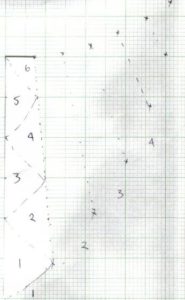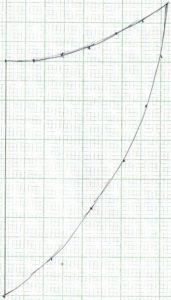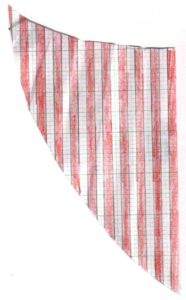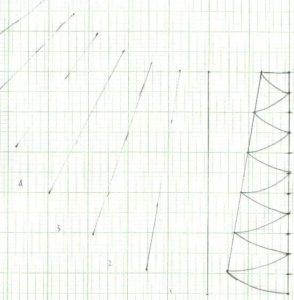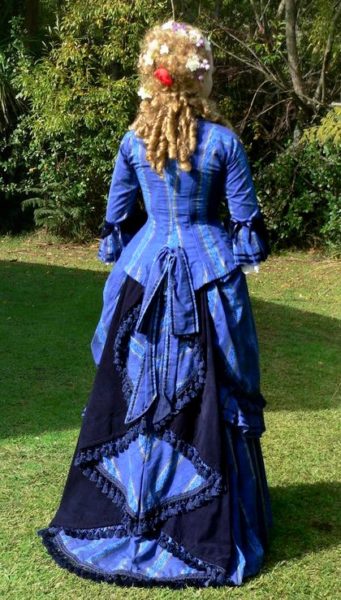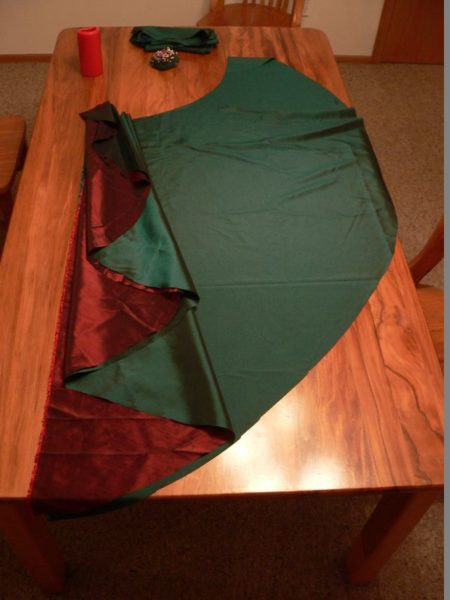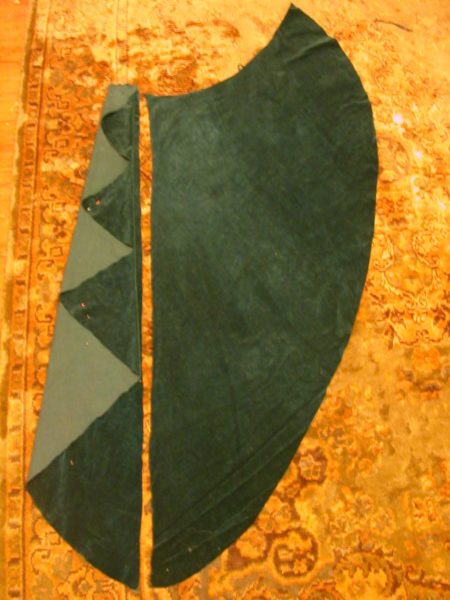-waterfall drapery
Please note this is a tutorial, the pieces may scale up well but they are not a one size fits all pattern.
First published in 2005
The waterfall is an extremely graceful type of drapery used in costumes depicting the mid-late Victorian era. They can be seen in many costumes in the stage production of The Phantom of The Opera and in movies such as Bram Stoker’s Dracula (Mina’s green silk dress when she first meets Dracula in London). They are even used in non Victorian costuming such as Star Wars (one of Padme’s night dresses in Episode III.)
The question of how to make these has come up many times recently (please note, and while I was happy with how I created the drapery for my first Blue dress and Hannibal drapery, it was trial and error. There must be an easy way to work out how your drapery is going to look.
And there is.
In my trial and error I had noticed that the top edge that is pleated and the curve of the free edge work to create the flare and curve of the base shape. So I decided to test with graph paper to show how this worked. I used this new method to drape my Australian version Wishing Dress from Phantom of the Opera.
Since creating this page, I have refined the method. I have replaced the original files with the newly updated graphics. The pattern here is as close to my original as I could make with the simplest measurements possible.
plotting the drapery
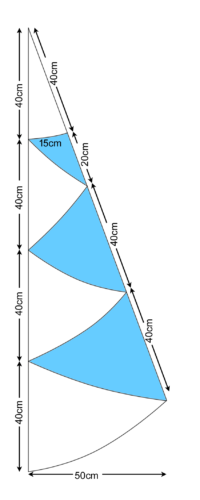
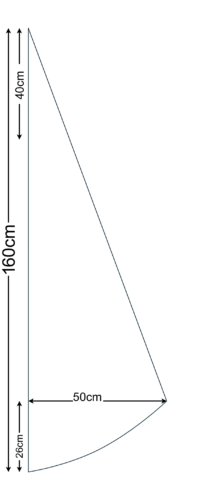
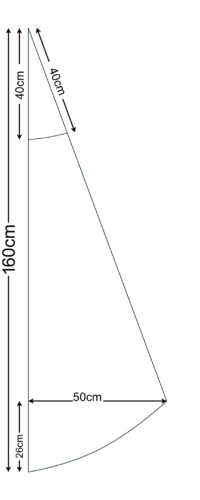
1) I first of all started by drawing what the final drapery would look like folded to shape, I used the colour blue to indicate the reverse side of the folds. If you have a photo of what you are aiming for this can help greatly as you can work with your measurements in place of the original, or adjust to what is most flattering to your proportions. I extended the lines of the sides to meet in an apex. This is to help align each fold in the diagrams.
2) To create the pattern in scale I started by using the length of the CENTRE BACK line. I used 120cm for the length, added 40cm for the extended line, and out 50cm for the widest part. This happened to be 26cm from the bottom.
3) The drapery is essentially a flared pleat and thus the top is much narrower than the bottom of each fold. This results in a curved top and bottom edge. To make sure the folds are evenly and accurately drawn i extended 40cm down the diagonal line to create a waist edge approximately 15cm across.
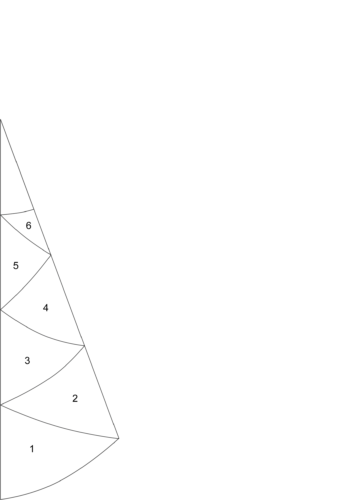
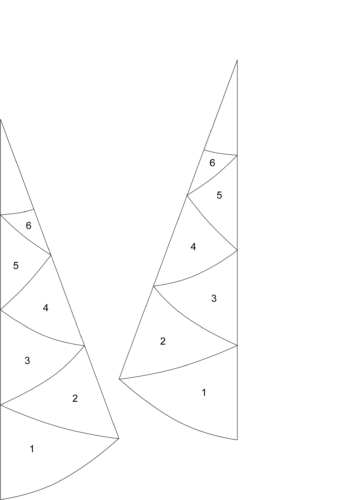
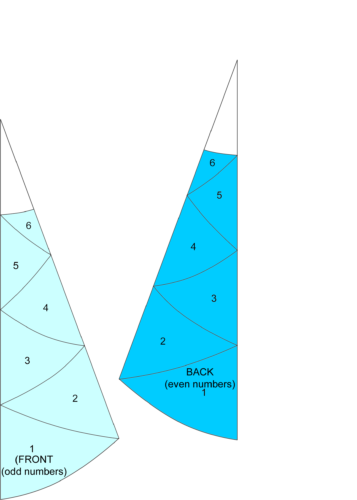
4) I draw this shape onto a piece of paper and indicate the folds by numbering each section from bottom to top. I do this on both sides of the paper. To illustrate this I have coloured the corresponding front and back of the shape- pale blue for the front, mid blue for the reverse.
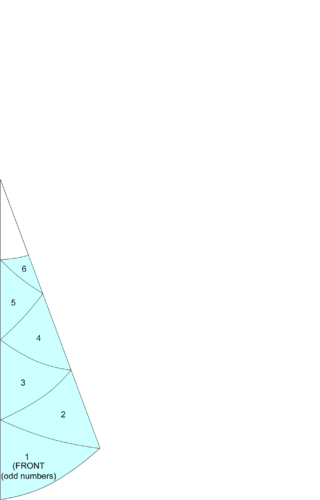
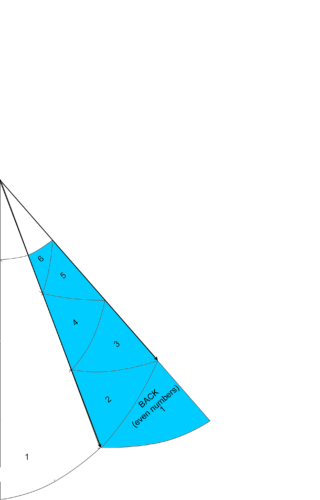
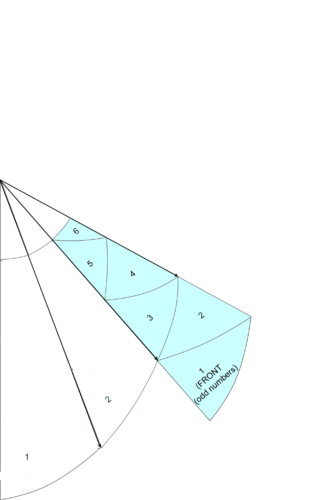
5) I start by placing the first fold on the paper and drew a line down the edges. This then matches up to the next section which is also marked on the paper. I repeat this until the last section is marked.
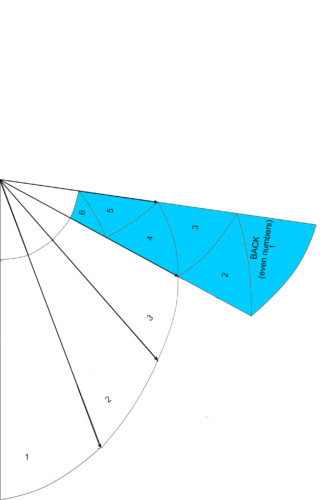
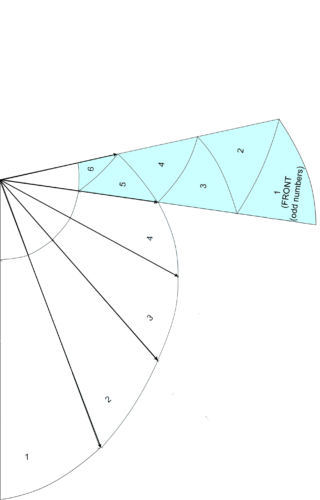
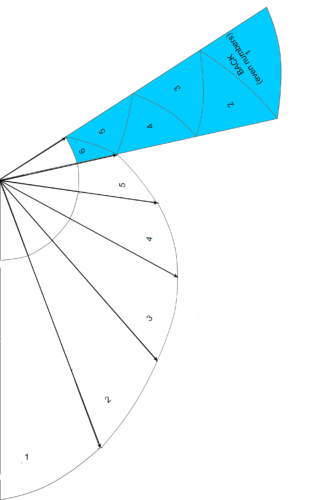
This line can then be smoothed and the amount of fabric needed for each half can be found. Note the lining will require the same amount of fabric.
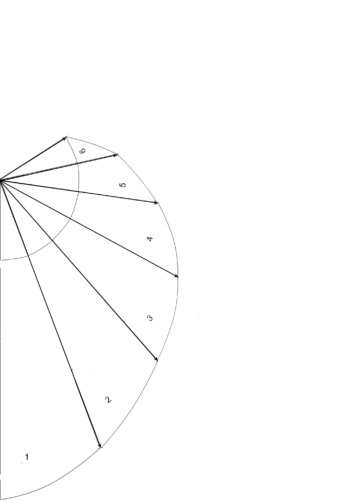
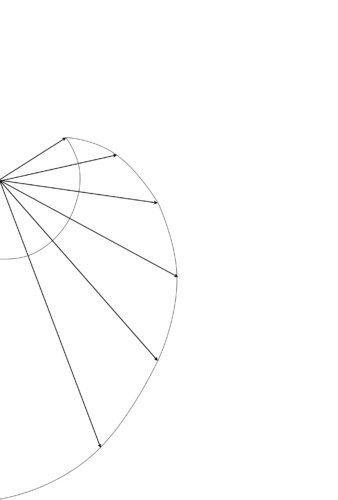
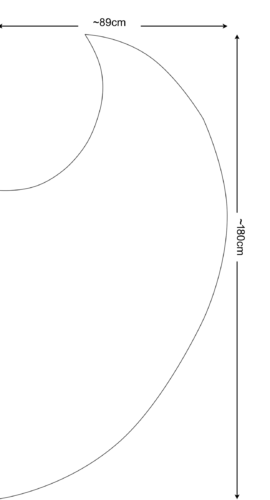
variations
This basic method can work for any style of waterfall drapery you want. The method is the same but the repeating shape will be different depending on whether you want a greater or lesser number of folds and how flared or straight you want the shape to be. The following two show how the drapery can be made to have few, shallow folds or many flared folds.
One can cut the striped fabric on the diagonal or across for different effects as well, these are simply examples to show how the different shapes can create different effects. I hope to show how I created the drapery for my first Blue Dress which is cut from a narrow rectangle in the centre and triangular pieces down at the sides, cut on the bias. I also hope to show how to cut the apron and pannier drapery as well.
